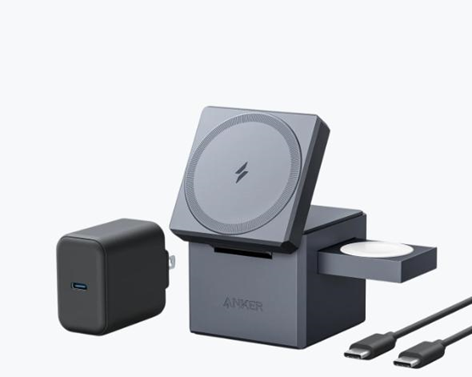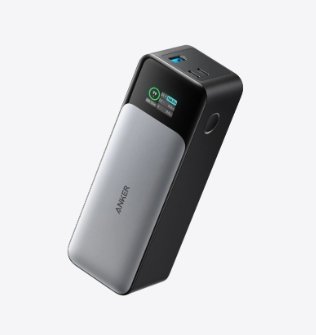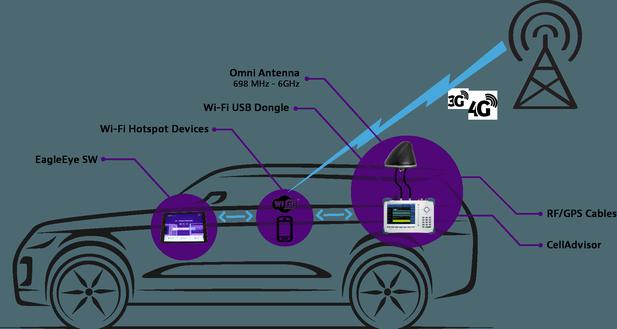Sixth-generation computer
Fromthefirsttothesixthgenerationofcomputers
Ithasbeenmorethan50yearssincethebirthofcomputersinthe1940s.Withtheinnovationofdigitaltechnology,computersareupdatedalmostevery10years.
Thefirstgeneration:electronictubecomputer
In1946,theworld'sfirstelectronicdigitalintegralcomputer-ENIACwasbornintheMoreCollegeoftheUniversityofPennsylvania.ENIACislikeabehemoth.Itweighs30tons,coversanareaof170squaremeters,andcontains18,000electrontubes,butitscalculationspeedis1,000timesfasterthanthebestelectromechanicalcomputersofthetime.
In1949,thefirststoredprogramcomputer-EDSACwasputintooperationatCambridgeUniversity.BothENIACandEDSACbelongedtothefirstgenerationofelectronictubecomputers.
Theelectronictubecomputerusesamagneticdrumasamemory.Themagneticdrumisakindofmagneticrecordingequipment,itisahigh-speedrotatingdrum-shapedcylinder,thesurfaceiscoatedwithmagneticmaterial,andtheinformationofeachpointisdeterminedaccordingtothemagnetizationdirectionofeachpoint.Becausethefirst-generationcomputersusedelectronictubes,theywerebulky,consumedalotofpower,hadlowcomputingspeed,hadahighfailurerate,andwereextremelyexpensive.Atthisstage,computersoftwareisstillintheinitialdevelopmentperiod,andsymboliclanguagehasappearedandisused,mainlyforscientificcomputing.
SecondGeneration:TransistorComputer
In1947,thetransistorsofShockley,Barding,andBrattonhadlesspowerconsumption,smallersize,lighterweight,andworkthanelectrontubes.Lowvoltageandgoodworkingreliability.In1954,BellLaboratoriesmadethefirsttransistorcomputer-TRADIC,whichgreatlyreducedthesizeofthecomputer.
In1957,theUnitedStatesmadecomputersallusingtransistors,andthesecondgenerationofcomputerswasborn.Thecomputingspeedofthesecond-generationcomputerisnearlyahundredtimesfasterthanthatofthefirst-generationcomputer.
Themainlogiccomponentsofthesecond-generationcomputerusetransistors,theinternalmemorymainlyusesmagneticcores,andtheexternalmemorymainlyusesmagneticdisks.Theinputandoutputaspectshavebeengreatlyimproved,andthepricehasdroppedsignificantly.Intheprogramdesigninvention,somegeneralalgorithmsandlanguageshavebeendeveloped,ofwhichtheFORTRANlanguageisthemostinfluential.ALGOLandCOBOLlanguagessubsequentlyappearedoneafteranother,andtheembryonicformoftheoperatingsystembegantotakeshape.
Thethirdgeneration:integratedcircuitcomputer
Intheearly1960s,KilbyandNoyceintheUnitedStatesinventedtheintegratedcircuit,whichtriggeredarevolutionincircuitdesign.Subsequently,theintegrationofintegratedcircuitsincreasedatarateofoneorderofmagnitudeevery3to4years.
InJanuary1962,IBMproducedtheIBM360seriesofcomputersusingbipolarintegratedcircuits.DEC(nowmergedwithCompaq)deliveredthousandsofPDPminicomputers.
Thethird-generationcomputerusesintegratedcircuitsaslogicelementsandhasawiderrangeofapplications.Especiallysomesmallcomputershaveformedthreeindependentsystemsintermsofprogrammingtechnology:operatingsystems,compilationsystems,andapplicationprograms.Collectivelyreferredtoassoftware.Itisworthmentioningthattheconceptof"multi-program"and"time-sharingsystem"intheoperatingsystem,combinedwiththewidespreaduseofcomputerterminalequipment,allowsuserstouseremotecomputersintheirownofficesorhomes.
Thefourthgeneration:Large-scaleintegratedcircuitcomputer
TheIntel4004,releasedin1971,wasthebeginningofthemicroprocessor(CPU)andamajorachievementinthedevelopmentoflarge-scaleintegratedcircuits..The4004usesalarge-scaleintegratedcircuittobuildthearithmeticunitandthecontrolleronachip.Althoughthewordlengthisonly4bitsandthefunctionisweak,itisthepioneerofthefourth-generationcomputerinthemicrocomputer.

From1972to1973,8-bitmicroprocessorscameoutoneafteranother,thefirsttoappearwasIntel8008.Althoughitsperformanceisstillimperfect,ithasshowninfinitevitality,drovemanymanufacturerstoinvestincompetition,andenabledthemicroprocessortodevelopvigorously.LaterappearedIntel8080,MOTOROLA6800andZilogZ-80.
After1978,16-bitmicroprocessorsappearedoneafteranother,andmicrocomputersreachedanewpeak.TypicalrepresentativesareIntel8086,Zilog’sZ-8000andMOTOROLA’sMC68000.
IntelCorporationcontinuestoadvancetheinnovationofmicroprocessors.Followingthe8086,the80286,80386,80486,Pentium,PentiumIIandPentiumIIIweresuccessfullydeveloped.Personalcomputers(PCs)continuetobeupdatedandbecomemorepopular.
Thefourth-generationcomputeruseslarge-scaleintegratedcircuitsaslogicelementsandmemory,makingcomputersdevelopinthedirectionofminiaturizationandgiantization.
Fromthefirstgenerationtothefourthgeneration,thecomputerarchitectureisthesame,whichiscomposedofacontroller,memory,arithmeticunit,andinputandoutputdevices,whichiscalledthevonNeumannarchitecture.
TheFifthGeneration:IntelligentComputers
In1981,theFifthGenerationComputerSeminarwasheldinTokyo,Japan,andthenalong-termplanforthedevelopmentofthefifthgenerationcomputerwasworkedout.Inthesystemdesignofthefifth-generationcomputer,thepreparationofknowledgebasemanagementsoftwareandinferenceengineisconsidered.Themachineitselfcanmakejudgmentsandinferencesbasedonthestoredknowledge.Atthesametime,multimediatechnologyhasbeenwidelyused,enablingpeopletointeractwithcomputersinmorenaturalwayssuchasvoice,image,andvideo.
Themainfeatureofintelligentcomputeristhatithasartificialintelligence,canthinklikeahuman,andhasextremelyfastcalculationspeed.Itshardwaresystemsupportshighparallelismandreasoning,anditssoftwaresystemcanprocessknowledgeinformation.Neuralnetworkcomputer(alsocalledneuroncomputer)isanimportantrepresentativeofintelligentcomputer.
SixthGeneration:BiologicalComputers
Semiconductorsiliconchipshavedensecircuits,andtheheatdissipationproblemisdifficulttocompletelysolve,whichaffectsthefurtherdevelopmentandbreakthroughofcomputerperformance.Researchershavediscoveredthatthedoublehelixstructureofdeoxyribonucleicacid(DNA)canholdahugeamountofinformation,anditsstoragecapacityisequivalenttomillionsoftimesthatofasemiconductorchip.Aproteinmoleculeisastoragebody,andhaslowimpedance,lowenergyconsumption,andextremelylowheatgeneration.
Basedonthis,theuseofproteinmoleculestoproducegenechipsandthedevelopmentofbiologicalcomputers(alsoknownasmolecularcomputersandgeneticcomputers)havebecometheforefrontoftoday'scomputertechnology.Biologicalcomputersareaqualitativeleapinspeedandperformancecomparedtosiliconchipcomputers,andareregardedasthe"sixthgenerationcomputer"withgreatdevelopmentpotential.
Therefore,whenaseriesofwavespropagatetoacertainpartofthemolecularchain,theytransmitinformationlikecarriersinsiliconintegratedcircuits(thecarriersofelectriccurrentarecalledcarriers).Becauseproteinmoleculesaremuchsmallerthanelectroniccomponentsonsiliconchipsandareveryclosetoeachother,biologicalcomponentscanbeassmallasseveralbillionthsofameter,andthedensityofcomponentscanreach100,000to1millionpersquarecentimeter.100million,oreven1,000trilliongatecircuits.
Differentfromordinarycomputers,becausetherawmaterialsofbiochipsareproteinmolecules,biocomputerchipsnotonlyhavethefunctionofself-repair,butalsocanbedirectlycombinedwithlivingorganisms.Atthesametime,thebiochiphastheadvantagesoflessheatgeneration,lowfunction,andnosignalinterferencebetweencircuits.
Theelectroniccomputerentersthesixthgeneration—neuralcomputer
Thehumanbrainhas14billionneuronscross-connectedwiththousandsofneurons,anditsfunctionisequivalenttoaminiaturecomputer.Theoverallspeedofthehumanbrainisequivalentto1,000trillioncomputerfunctionspersecond.Manymicroprocessorsareusedtoimitatetheneuronstructureofthehumanbrain,andalargenumberofparalleldistributednetworksareusedtoformaneuralcomputer.Inadditiontomanyprocessors,neuralcomputersalsohaveneural-likenodes,andeachnodeisconnectedtomanypoints.Ifeachstepofthecalculationisassignedtoeachmicroprocessor,andtheyareoperatedatthesametime,theinformationprocessingspeedandintelligencewillbegreatlyimproved.
Theinformationoftheneuroelectroniccomputerisnotstoredinthememory,butstoredinthenetworkbetweenneurons.Ifanodebreaks,thecomputerstillhastheabilitytoreconstructdata,italsohasassociativememory,visualandsoundrecognitioncapabilities.Japanesescientistshavedevelopedlarge-scaleintegratedcircuitchipsforneuroelectroniccomputers.400neuronsand40,000nervebondscanbesetona1.5squarecentimetersiliconchip.Thischipcanachieveaspeedof200millionoperationspersecond.In1990,Japan'sRicohCompanyannouncedthedevelopmentofalarge-scaleintegratedcircuit"neuralLST"withlearningfunctions.Thisisachipsuccessfullydevelopedbasedonthenervecellsofthehumanbrain.Itprocessesinformationataspeedof9billiontimespersecond.TheneuroelectroniccomputerdevelopedbyFujitsuResearchInstituteupdatesdataataspeedofnearly100billiontimespersecond.NEClaunchedaneuralnetworkvoicerecognitionsystemthatcanrecognizeanyone'svoicewithacorrectrateof99.8%.TheUnitedStateshasdevelopedaneuroelectroniccomputercomposedoftwonerveblocksconnectingtheleftbrainandtherightbrain.Therightbrainistheempiricalfunctionpart,withmorethan10,000neurons,suitableforimagerecognition;theleftbrainistherecognitionfunctionpart,containing1millionneurons,usedtostorewordsandgrammaticalrules.AirportsinNewYork,Miami,andLondonhaveusedneurocomputerstodetectexplosives.600-700piecesofluggagecanbecheckedperhour,withadetectionrateof95%andanerrorrateof2%.Neuroelectroniccomputerswillbewidelyusedinvariousfields.Itcanrecognizetext,symbols,graphics,language,andsignalsreceivedbysonarandradar,interpretchecks,estimatethemarket,analyzenewproducts,conductmedicaldiagnosis,controlintelligentrobots,andrealizeautomaticdrivingofcarsandaircraft,discover,Identifymilitarytargets,conductintelligentcommand,etc.
Implementationofthesixth-generationcomputer
Thecoreofthesixth-generationcomputerisdecimal,whichisclearlydistinguishedfrombinary,whichisthe0,1,2,3,4thatcanrecognizenaturallanguage.5,6,7,8,9,thedecimalsystem;thecalculationmethodiscompatiblewiththebinarymethod,Chineseabacusandmanyotheralgorithms.Binarycomputersusespecialcybernetics;decimalsystemsuse"generalizedcontrolprinciples";
Thechiparrayandbinaryarejustatthepositiveandnegativeends,andthecalculationrangeoflessthan10,000transistorsexceedstherangeofbinarynumbers.Millionsoftransistorsdonotrequireregisters.Itusesthe"differentialmultiplication"technologytoachieveinfinitenumberofdecimalplaces,andthereisnoconceptoffloating-pointcalculations.
Latest: Vector space
Next: Data Frame








